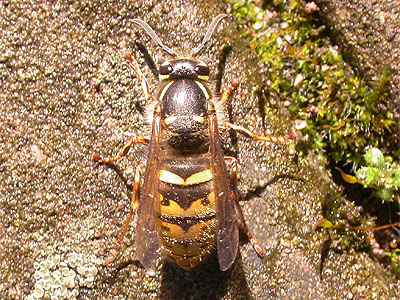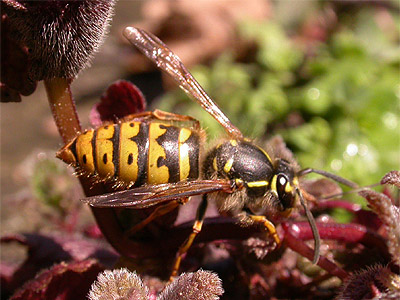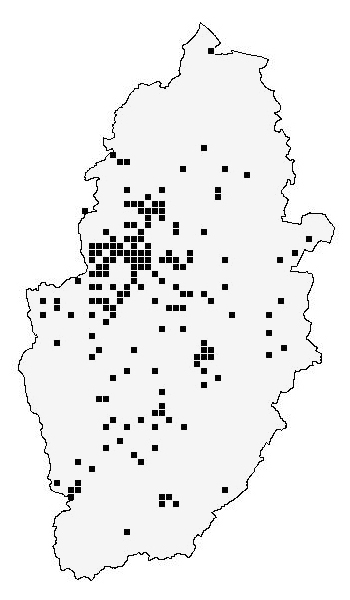| Wasps are
social insects and well known to everyone. Colonies build
up during the Summer and can eventually total several
thousand by the time the colony dies at the onset of cold
weather. Only the young queens survive the Winter,
hibernating in sheds and hollow trees etc, to start new
colonies in the Spring. The Common Wasp is likely to be
the most regularly encountered species of wasp, usually
nesting below ground in old rodent holes, but nests are
frequently found in roofspaces and lofts etc. The two
photographs show the queen. |




